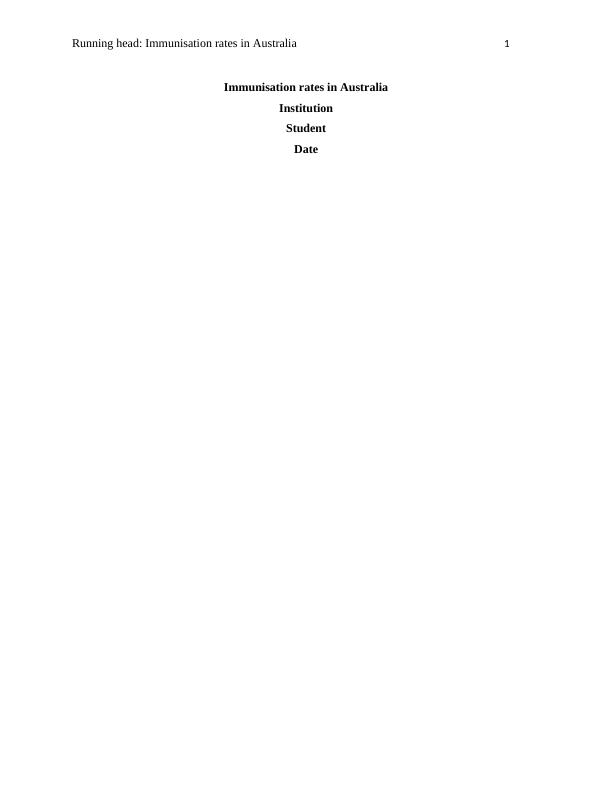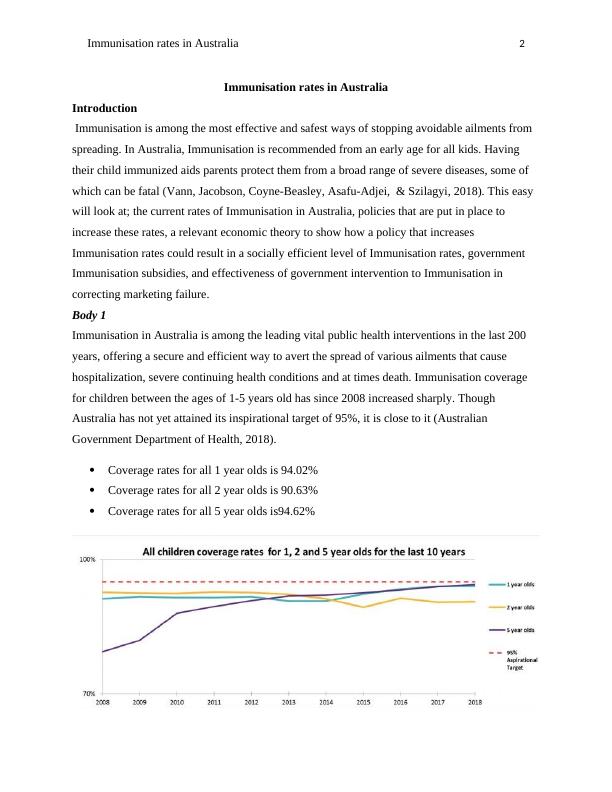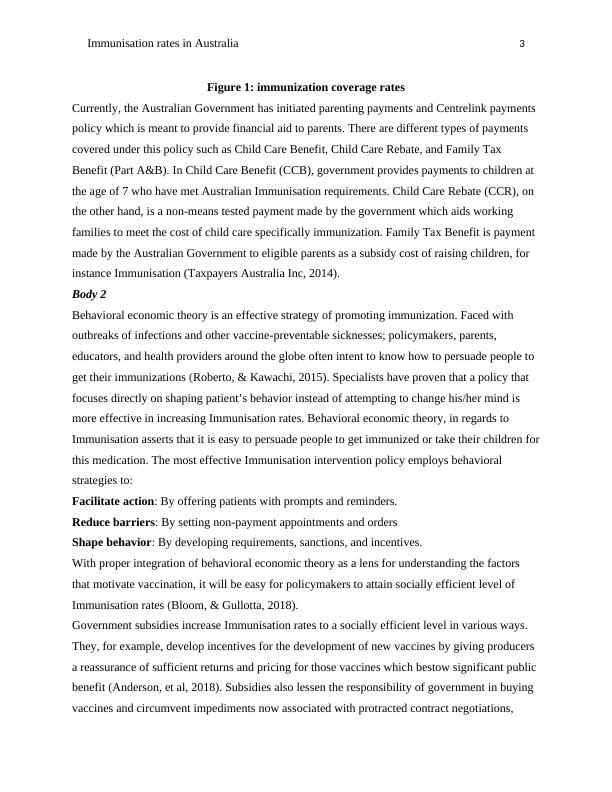Immunisation rates in Australia
8 Pages2365 Words292 Views
Added on 2023-04-22
About This Document
This article examines the current rates of immunisation in Australia, the policies in place to increase these rates, and the effectiveness of government intervention in immunisation. It also explores how government subsidies can lead to socially efficient levels of immunisation. The article provides insights into the economic theory behind immunisation and discusses the impact of government policies such as 'No jab, no play' and 'No jab, no pay'.
Immunisation rates in Australia
Added on 2023-04-22
ShareRelated Documents
End of preview
Want to access all the pages? Upload your documents or become a member.
(PDF) No Jab, No Job? Ethical Issues
|10
|2795
|77
Immunization against Whooping Cough and Measles in Australian Children
|6
|1527
|95
The Case of Mia Masterson (No 4 Wellbeing street) Promoting mandatory vaccination
|10
|2630
|295
Immunisation Policies in Australia: An Economic Analysis
|9
|2140
|105
Compulsory Childhood Vaccinations
|4
|813
|476
Contemporary Challenges regarding Informed Consent (Doc)
|22
|5419
|63



